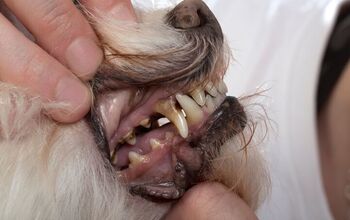The Nose Knows! Study Finds Dogs Can Detect Heat With Their Noses

A new study from researchers at Lund University and Eötvös Loránd University confirmed that dogs could sense the body heat of mammalian prey, and this could explain how dogs who have impaired hearing, sight or even smell can still be successful hunters.
Detecting this weak thermal radiation is a capability that only a handful of animals are known to have. Those animals include a common vampire bat, black fire beetles and certain snakes. They use that thermal radiation sensing for hunting their prey. The skin on the tips of mammals’ noses around their nostrils is called the rhinarium. Most mammals have naked and smooth skin on their rhinaria.
Related: What is a Scenthound?
Dogs, however, are different. Their rhinaria are moist, full of nerves and colder than the ambient temperature. Researchers believe this is what gives them the ability to detect smell AND heat.
The researchers trained three pet dogs to choose between a warm object (approx. 88 degrees F) and an ambient, or room-temperature object each placed the same distance away. The dogs couldn’t smell or see the difference between the objects; even the scientists could only detect the differences by touch. After they were trained, the dogs were tested in double-blind experiments and all three were successful in detecting the objects that gave off the weak thermal radiation.
The researchers also scanned the brains of 13 pet dogs, all of different breeds, in a functional magnetic resonance imaging scanner. While doing so, they gave the dogs objects that emitted neutral or weak thermal radiation. They saw that the left somatosensory cortex in the dogs’ brains was more responsive to the objects with warm thermal stimulus than compared to the neutral ones. The somatosensory cortex delivers inputs from the nose to the brain.
Related: Study: Dogs Use Scent To Detect Low Blood Sugar In Diabetics [Video]
The experiments combined led researchers to confirm that dogs can sense weak hot spots and their brains, like vampire bats, are activated by infrared radiation.
This finding may be why some dogs are so successful in finding bodies in rubble after natural disasters, or even when people are lost—they combine their sense of smell and this amazing ability to be even more awesome.

More by Lori Ennis























